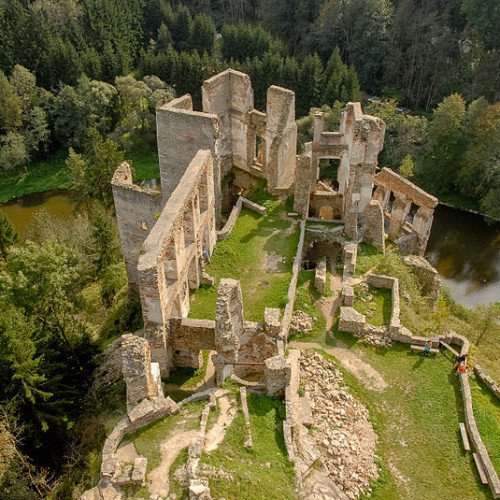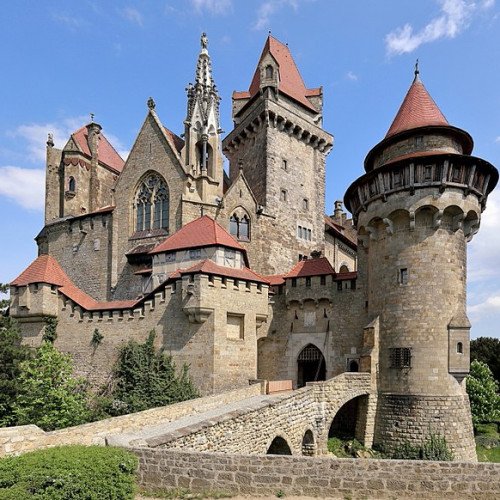Castles of "Austria" BURGRUINE KOLLMITZ vs BURG KREUZENSTEIN

BURGRUINE KOLLMITZ
Kollmitz Castle (German: Burgruine Kollmitz, lit. “castle ruins of Kollmitz”) is a ruined castle east of Raabs an der Thaya in Lower Austria, Austria. The Castle was first mentioned in the 13th century and the construction of its main tower was completed in 1319. In the 14th century the castle was used as a district court with ownership changing often. In 1411 the Freiherr von Hofkirchen came into possession of the castle, whose family would control the castle for the next two centuries. The Hofkirchen family lost possession of the castle in 1611 when Wolfgang von Hofkirchen died in exile in Prague during the Habsburg's Counter Reformation, which saw him as a ringleader of Protestant nobility. Following the end of Hofkirchen control, the castle changed hands several times and may even have been abandoned. In 1708 the Castle was acquired by Franz Anton von Quarient und Raal under whom the castle fell into disrepair as it no longer could serve any practical purpose.
Statistics for this Xoptio

BURG KREUZENSTEIN
Burg Kreuzenstein is a castle near Leobendorf in Lower Austria, Austria. Burg Kreuzenstein is 265 metres (869 ft) above sea level. It was constructed on the remains of an early medieval castle that had fallen into disrepair and was then demolished during the Thirty Years' War. Intended to be a family vault for the Wilczek family, it was rebuilt in the 19th century by Count Nepomuk Wilczek with money from the family's large Silesian coal mines. Kreuzenstein is interesting in that it was constructed out of sections of medieval structures purchased by the family from all over Europe to form an authentic-looking castle. Thus, the castle can be considered both a 'neo-' and 'original' medieval structure. The castle is sometimes used as a location for films. This castle is sometimes confused with the medieval castle Burg Liechtenstein, where the movie The Three Musketeers was filmed in 1993. The origins of Burg Kreuzenstein, like most castles in Lower Austria, date back to the 12th century. Originally built by the Counts of Formbach (now Vornbach, Bavaria), the castle passed into the possession of the Counts of Wasserburg through marriage. Through Ottokar II of Bohemia, the castle came into the possession of the Habsburgs, in 1278. In July 1527, the Anabaptist preacher Balthasar Hubmaier was arrested under the pretext of causing riots in Mikulov, Moravia and transferred to Burg Kreuzenstein. He was interrogated there but refused to renounce his beliefs and was burned at the stake in Vienna. Until the Thirty Years War, the castle had never been conquered but then it fell into the hands of the Swedish Field Marshall Lennart Torstensson, who, on his departure in 1645, blew up three parts of the building (some sources say four).